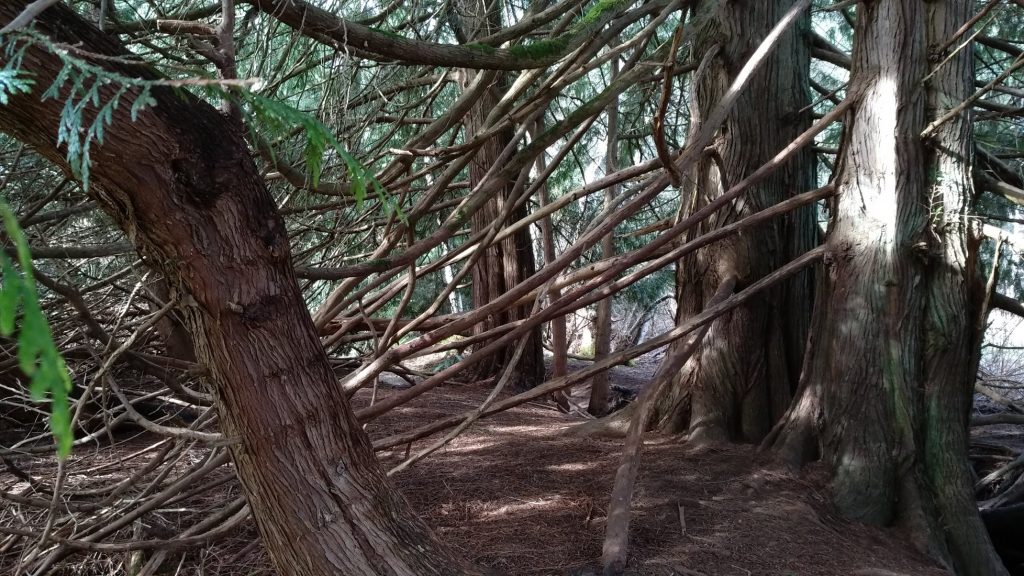Dear reader!
The following is a collective response to the second event in the ‘Collaborative Dialogue’ series, a professional development opportunity hosted on March 17, 2021. You will find a brief introduction to this series in our blog post posted on March 8th. We invited presenters, guests, and hosts to co-compose this blog post. Our hope was to sustain the ‘Collaborative Dialogue’ by staying with the generous offerings and creating a space for a playful “back and forth” (see Amanda Gillmore’s post, 2021). We created an online document that updates in real time, shared the invitation to contribute, and waited…
We are connecting to several blog posts shared at the ‘Collaborative Dialogue’:
Sabrina and Julie (forthcoming – on mentorship)
Amanda Gillmore (March 17, 2021)
Vania Zanetti (March 16, 2021)
Kate Boyd and Danielle Cazes (February 23, 2021)
Antje: Welcome to this site for curiosity, experimentation, improvisation, and wonder! You are invited to join this written dialogue inspired by the question: How might we – collectively – continue the ‘Collaborative Dialogue’ event(s) in a virtual way? Here are a few of my questions as a way to enter the conversation, feel free to add your own. What are you compelled to write about as you reflect about the event? What ideas and themes are you returning to? What are some of the alternate stories that you witnessed at the ‘Collaborative Dialogue’ event? What might this dialogue set into motion? What questions are you left with?
Cheryl: Amanda’s swinging boots are an invitation to a child who responds. What are the messages that we send to children, to the world in the way we move? What are the senses beyond words? Toddlers and educators take time to eat their snacks and linger with Sabrina and her mentor Julie. Conversations verbal and otherwise activated by the shared experience of nourishing our bodies and souls. What is activated between us as we think with Vania and Peter Moss?
Antje: I shared Vania’s reflections on play spaces with my sister when we visited Linley Valley Cottle Lake Park in Nanaimo. Inspired by Peter Moss, Vania “wonder[ed] about the multiple ways spaces can provoke exploration”. Their words echoed into this space. We lingered to watch my nephews with/in the trees and stream. This also takes me to Powell River, to the forest, just out of sight, that Kate and Danielle visit with children and their families. How might we cultivate a love for a place? What would the vocabulary be?

Vania: I had asked Sabrina and Julie to speak on their mutual connection to each other. In my reflections I wondered about my own mentor (twenty years ago). I asked myself the same question I asked during the dialogue. What was the moment when I knew I could trust or that I felt connected to my mentor? And I knew the answer. I’ve never forgotten the moment because I use the same words when I work with my colleagues to this day.
There are times for whatever reason when children will be resourceful in getting their needs met. On this particular day a child was not getting what they needed from me (a newbie). Clearly thinking I didn’t know what they were asking they moved on to make the same request from my mentor. My mentor had been an educator in the program for a few years more than myself. My mentor replied with “Vania is right…” and repeated what I had already told the child. Word for word. The child moved on satisfied with the response. To this day I don’t remember what the request was but those three words made me feel so validated, so able, so confident and so trusted. I felt connected knowing they were supporting me in a shared role of caregiver. This was a mentor that saw the importance of stability, consistency and predictability for both the child and a mentee’s emotional development.
Later that day we were able to discuss the moment together. I’m assuming we made changes as may have been needed or perhaps we laughed together at the child’s ingenuity. In reflection the connection happened because my mentor had been vulnerable with me. Not allowing the child to perceive them as ‘greater than’ in that moment made me feel I could be vulnerable together with them. The willingness to be vulnerable made way for connection and trust between us.
When I consider this I think again about the play spaces we create. If dominant language is used when choosing materials, choosing curriculums, and enforcing outcomes how can we be vulnerable with each other? How authentic are our connections with colleagues or the children we care for? How can growth happen when we are not able to make connections that help keep us open to new possibilities?
